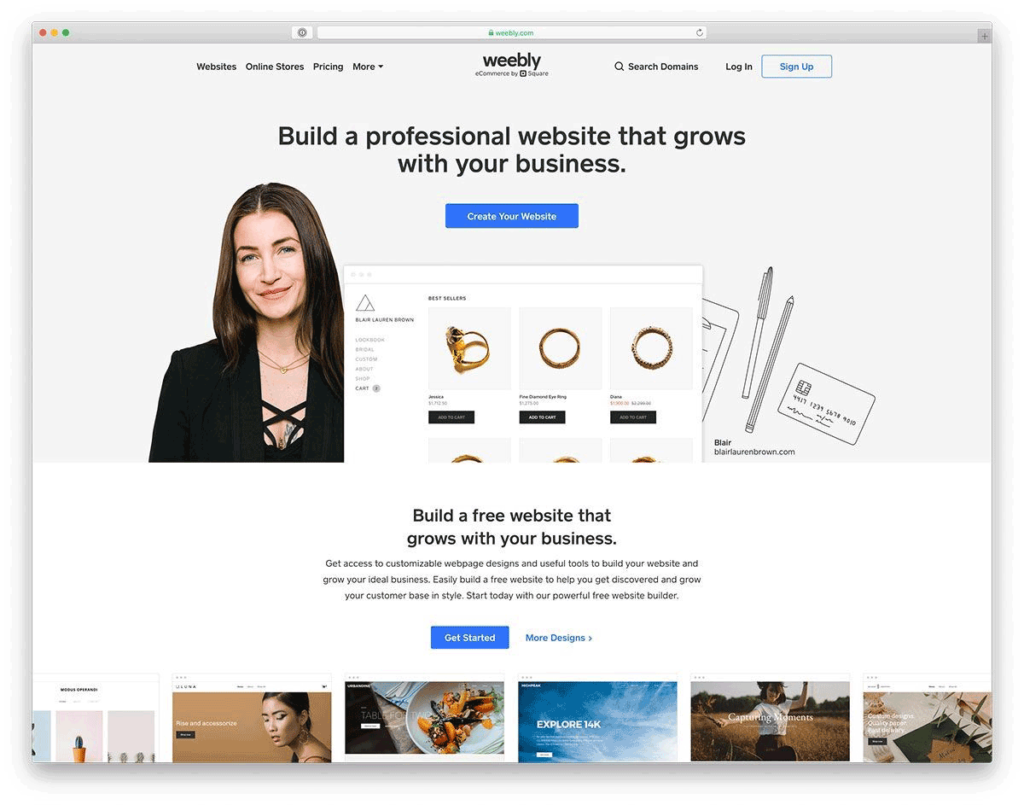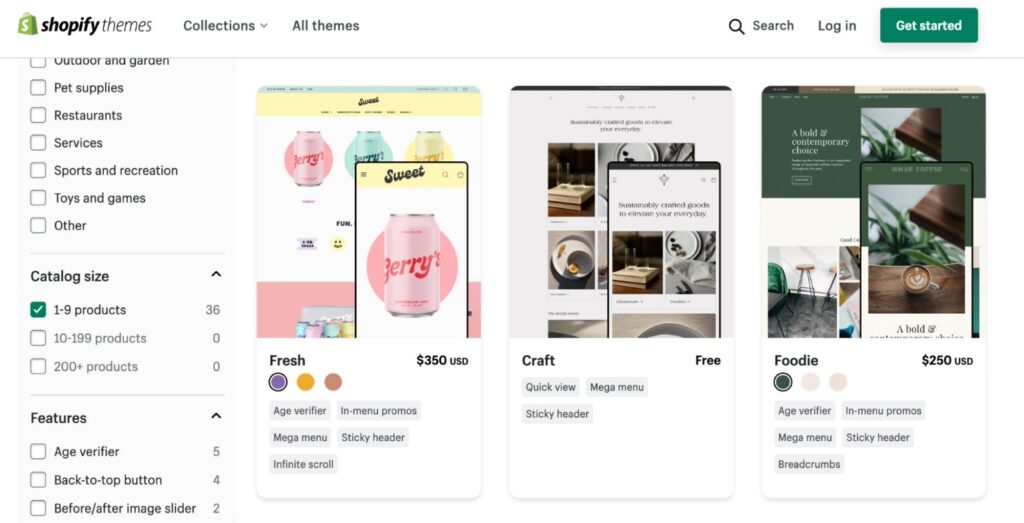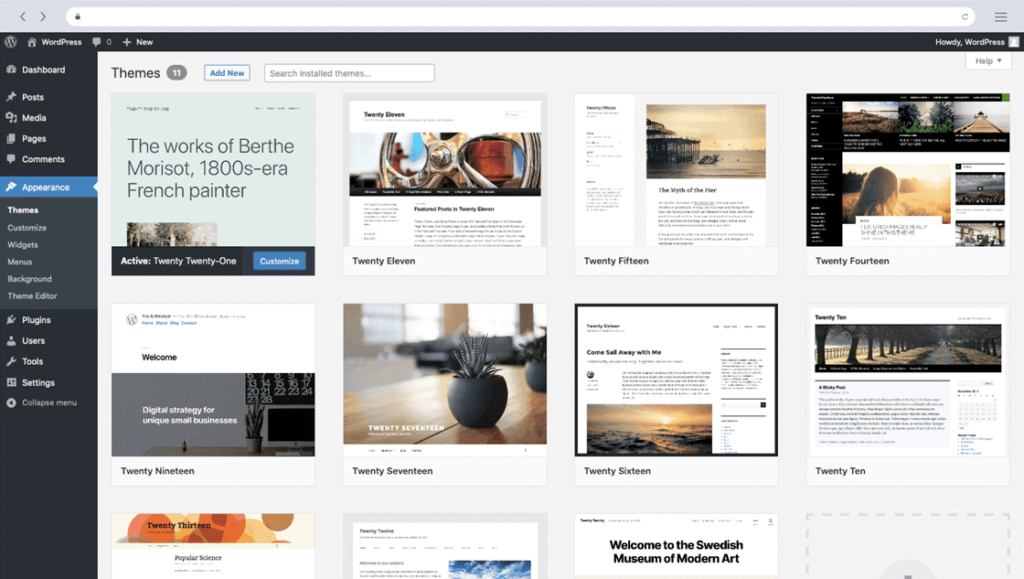Table of Contents
Introduction
With so many options for building a website these days, it can be tough to determine which website builder is the best fit for your needs. Whether you’re looking to create a simple informational site, an online portfolio to showcase your work, or a full-fledged e-commerce store, the website builder you choose can have a big impact on your online success.
In this listicle article, you’ll count down the top 5 best website builders available right now based on value, features, ease of use, and more. For each website builder, you’ll overview why you should pick it, its main pros and cons, and additional details you need to know. Keep reading to find the perfect website builder to bring your web dreams to life!
SUMMARY
1. Wix
2. Weebly
3. Squarespace
4. Shopify
5. WordPress
Overview of Website Builders
How to Choose the Best Website Builder
Pros & Cons of Website Builders
What to Watch Out For
Pro Tips
Recap
1. Wix

9.8/10
- • Enjoy an easy drag and drop editor
• Access 900+ designer templates
• Ensures mobile optimization
• Utilize built-in SEO tools
• Accept payments and sell products
- • Encounter a steeper learning curve
• Experience limited storage on cheaper plans
• Enjoy add-one at higher cost
With Wix, you can choose to build an online store, blog, portfolio, or business website. Its drag and drop editor allows you to customize almost every element on your page without any coding knowledge required.
You have over 900 templates to choose from spanning industries and website types. All Wix themes are mobile-friendly, eliminating the need to create a separate mobile site.
Pricing starts at $4.50 per month for the combo plan that includes 1 GB bandwidth and 500 MB storage. This might limit growth for more content-heavy sites. The $24 per month unlimited plan offers unlimited storage and bandwidth.
Ecommerce features allow you to easily sell products through your Wix site. However, transaction fees apply depending on your plan level. Add-ons like extra storage, mailing lists, and bookings offer more capability but also raise the monthly cost.
2. Weebly

9.7/10
- • Benefit from an extremely simple drag and drop editor
• Access quality templates across industries
• Take advantage of the free plan available
• Utilize built-in marketing tools
- • Face fewer customization options
• Encounter a price jump during renewal
• Be limited by the ecommerce plan
Weebly stands out for offering one of the easiest drag and drop site builders on the market. Its straightforward editor, which works on a grid system, doesn’t require any design experience to piece together an attractive, professional-looking site.
You have hundreds of templates available for blogs, small business sites, online stores, and more. Weebly offers flexibility to make the site distinctly yours, even though customization is more limited than a builder like Wix.
Weebly also provides a free plan option so you can give it a test run, although you are limited by Weebly ads. Its paid plans start at a budget-friendly $10 per month during your first year. However, prices jump by around 25% upon renewal.
Built-in marketing and ecommerce features allow you to capture leads and sell products easily. But maximum product limits in lower pricing tiers make their ecommerce better suited to smaller product ranges.
3. Squarespace

9.5/10
- • Enjoy beautiful award-winning templates
• Use the easy point and click editor
• Access built-in marketing capabilities
• Receive top-notch customer support
- • Navigate a steep learning curve
• Commit to annual contracts
• Encounter expensive plans
The standout factor drawing most people to Squarespace lies with its modern, pixel-perfect templates in a huge range of categories. All exquisitely crafted by top designers, they allow you to create a fashionable website with ease.
Although customization is somewhat limited to maintain design integrity, Squarespace’s templates still offer ample flexibility to tailor your site’s layout, colors, and content.
Ease of use is slightly impeded by a steep initial learning curve. The editor uses a unique point-and-click system rather than drag and drop. However, once mastered, it allows for efficient site building.
Customer support is best-in-class with 24/7 live chat and email. Plans start at $12 per month if billed annually, with a 14-day free trial. Integrated ecommerce capabilities make selling online simple through this visually first-class web builder.
4. Shopify

9.2/10
- • Customize storefronts fully
• Use robust built-in ecommerce features
• Scale with ease as you grow
• Sell everywhere with one backend
- • Find it not ideal for non-store websites
• Encounter complexity for ecommerce beginners
• Face expensive pricing tiers
While Shopify focuses exclusively on ecommerce sites rather than more general websites, it earns its place as a top website builder option for anyone serious about selling online. At its core is an incredibly robust set of store management tools for creating shop sections, managing inventory across sales channels, processing orders, and more.
Using Shopify’s theming framework Liquid, developers can fully customize online store designs right down to the HTML and CSS source code. So the possibilities are endless.
With pricing starting at $32 per month though, Shopify sits at the pricier end of website builder options. However, built-in features plus scalability make it a worthwhile long-term investment for ambitious ecommerce store owners.
PRO TIPS >>> Best Website Builders for Restaurants
5. WordPress

9.0/10
- • Customize sites completely
• Access an enormous theme & plugin library
• Experience easy migration
- • Encounter a steeper learning curve
• Handle manual updates
• Find limited out-of-the-box capabilities
WordPress powers over 35% of all websites, so no list of top website builders is complete without it. Its open-source CMS foundation enables you to modify WordPress sites to your exact specifications.
Unlike other builders with their constraints around pre-set themes and page editors, WordPress sites can take virtually any form imaginable. Although this comes at the cost of added complexity for users.
With over 55,000 free themes and plugins though, pretty much any functionality you wish for can be added to pages with minimal coding expertise needed. Although occasional manual updates are required.
For non-developers, WordPress still enables creating great sites through its user-friendly page builder and thousands of drag and drop themes. Just expect limitations versus a developer fully customizing at source code level.
Overview of Website Builders

Conceptually, website builders act as an easy shortcut to creating professional sites quickly without needing to manually code web pages from scratch. They allow customizable drag and drop placement of elements like text, images, and videos to build up a page.
The benefits lie in not only heavy lifting involved in programming complex site functionality and design being handled behind-the-scenes. But also taking care of hosting, security, mobile optimization, and domain setup.
Most builders offer a choice of themes or templates tailored to different industries and site types too. Their professionally designed layouts and styles accelerate the process by giving you an instant visually appealing starting point to then make your own.
Leading all-in-one website builders include the likes of Weebly, Squarespace, Wix and GoDaddy. WordPress.org meanwhile offers the popular open-source CMS (content management system) to build on rather than a standalone builder product.
How to Choose the Best Website Builder
With such a crowded market full of options, settling on the most suitable website builder for your needs can feel overwhelming. By focusing on these key factors though, you can narrow down your shortlist effectively.
When building your website, consider the following factors:
- Determine the core goal your site needs to fulfill, whether it’s ecommerce, portfolio showcase, or community forum. This guides the selection of key features the platform should offer.
- Evaluate how much you’re willing to spend monthly on your site. While many builders offer free or freemium tiers, essential features usually require a paid plan.
- Decide whether you’re comfortable learning web design skills or prefer an easy drag-and-drop editor that requires minimal expertise.
- Choose between using provided themes/templates or fully customizing the design from scratch. More flexibility in design requires deeper capabilities.
- Determine if you need your own branded domain name and dedicated hosting account to retain full control over your website.
- Assess if you’re likely to outgrow starter capabilities quickly and check for scalability around ecommerce, storage, bandwidth, etc.
Pros & Cons of Website Builders
Pros
- Avoid coding/programming in most builders
- Experience quicker setup versus custom development
- Choose from stylish templates/themes
- Benefit from built-in hosting, security, speed features
- Utilize SEO and marketing capabilities
Cons
- Encounter limited design flexibility with set templates
- Navigate a steeper learning curve for more advanced customization
- Face potential lack of niche functionality needed
- Handle ongoing subscription fees
GET SMARTER >>> Wix Website Builder Review
What To Watch Out For
While modern website builders aim to streamline site creation, you may often encounter common pitfalls such as unexpected renewal price rises after introductory offers expire, limitations around customizing templates to preserve original design, constrained ability to modify core source code limiting complex tweaks, an overwhelming array of packages and add-ons driving up costs, and a steep learning curve in mastering advanced builder functionality.
Pro Tips
Follow these expert tips when selecting and setting up with your chosen website builder for best results:- Test options fully via free plans or trials prior to purchasing to gauge if it’s user-friendly and flexible enough.
- Take advantage of money-saving introductory discounts but set reminders on your calendar to reassess renewal pricing.
- Align features to needs. Not using complex site elements? A basic builder plan will likely suffice over pricier advanced options.
- Check mobile optimization. Preview the responsive mobile view early on and tweak elements not displaying correctly.
- Use existing domains. Adding domain mapping capability enables utilizing a trusted domain name you already own if preferred.
Recap
If you need to create a website, using an online website builder platform can save huge amounts of time and money versus hiring a web developer to code everything manually. With drag and drop functionality, stylish templates and built-in speed and security features, they empower you to build a site yourself too.
You’ve gone through the top 5 best website builder options – Wix, Weebly, Squarespace, Shopify and WordPress – highlighting the strengths of each and considerations around pricing and capabilities. Additional guidance covered how to select the right builder for your needs, plus pros and cons of using them versus traditional custom web development.
By following the tips and evaluating the shortlist against your specific site requirements and budget, you can confidently choose a website builder that will successfully turn your online vision into reality.







